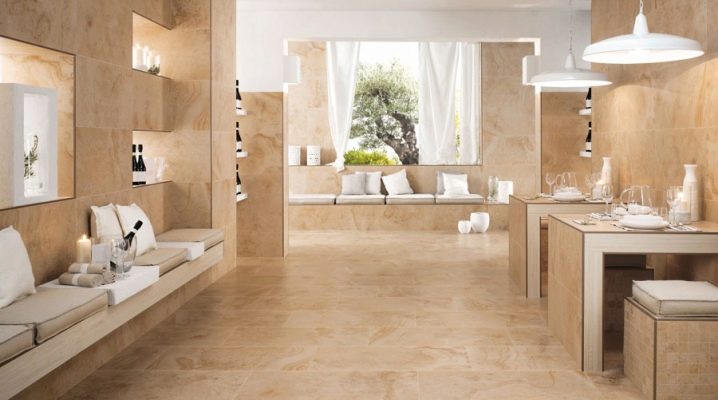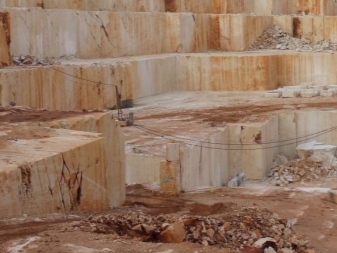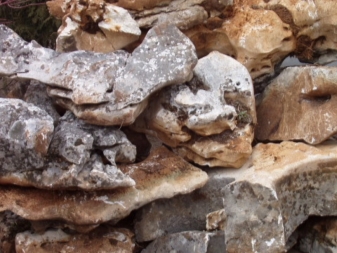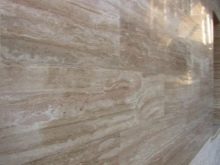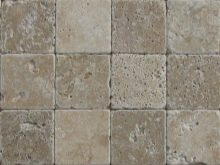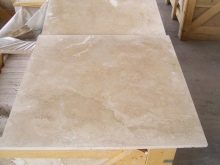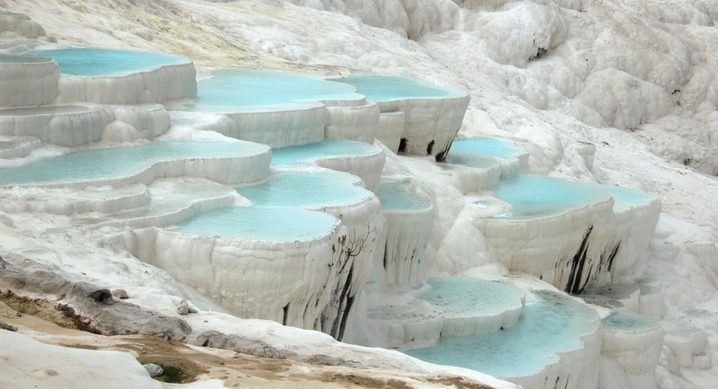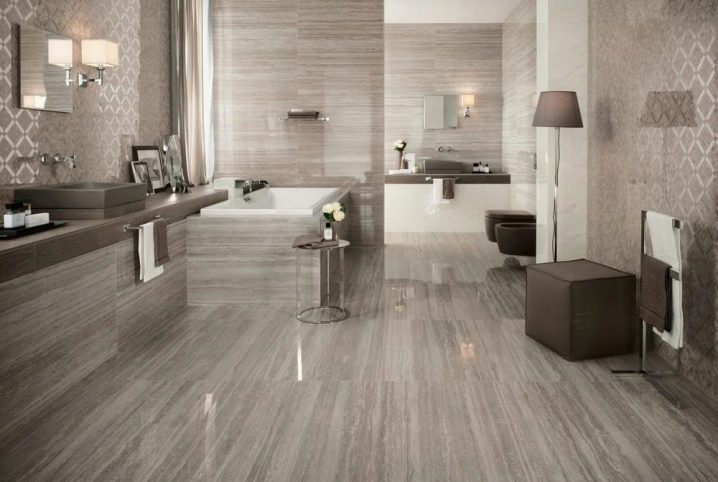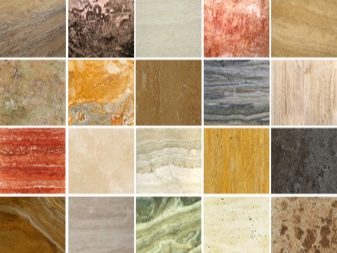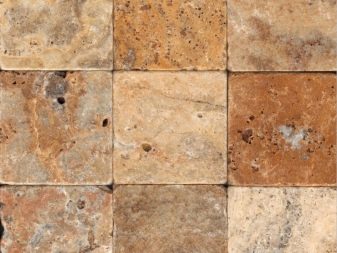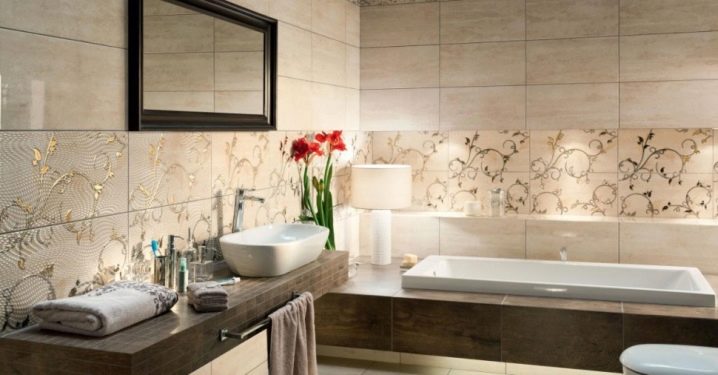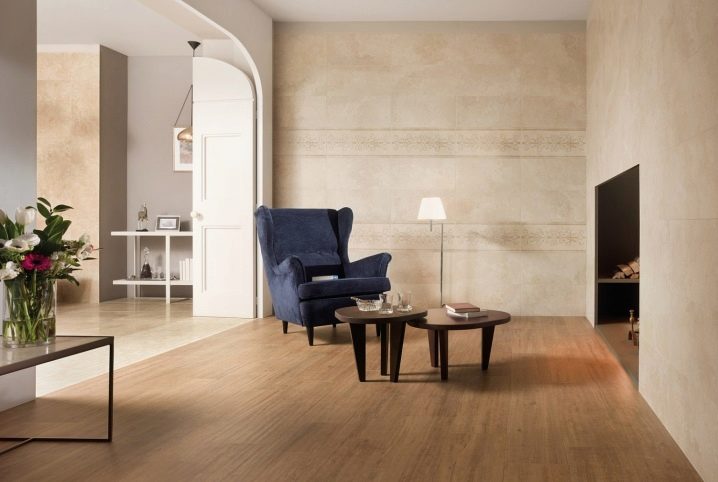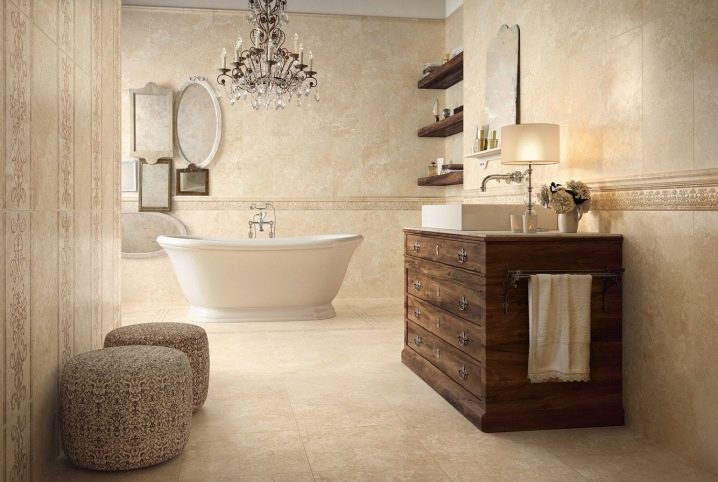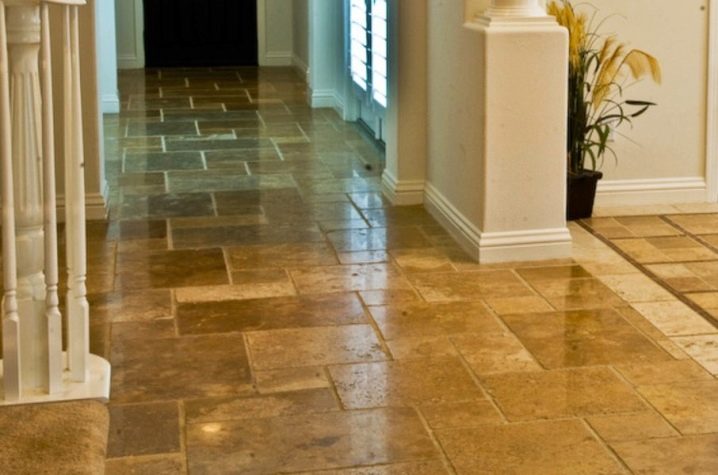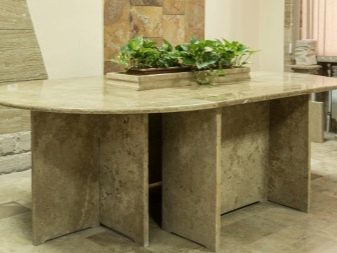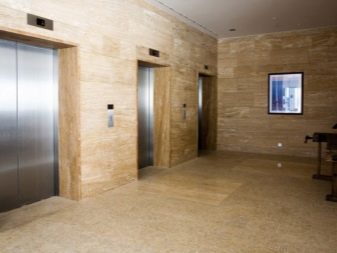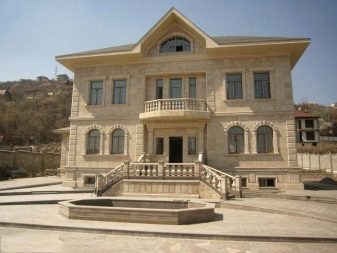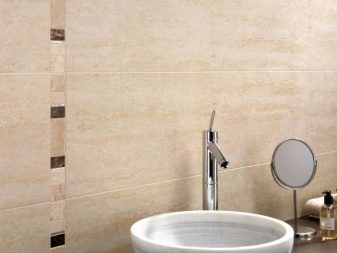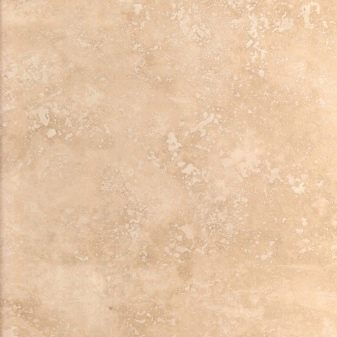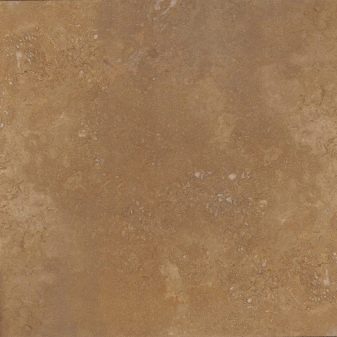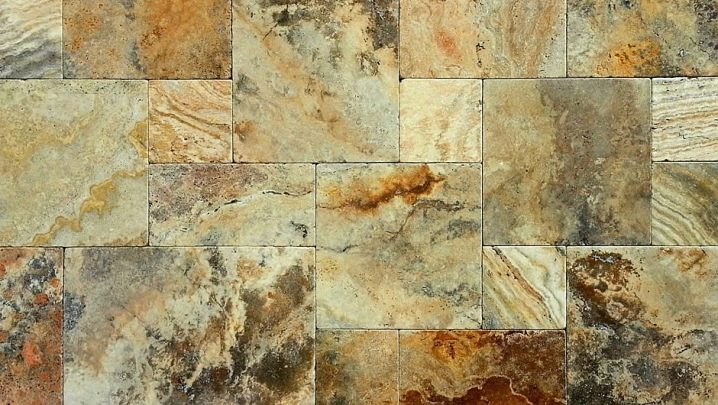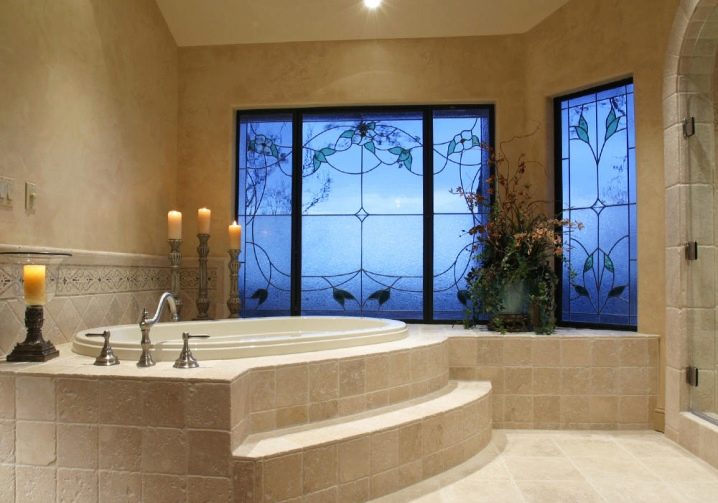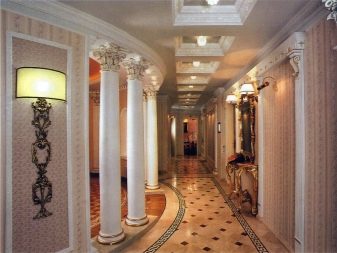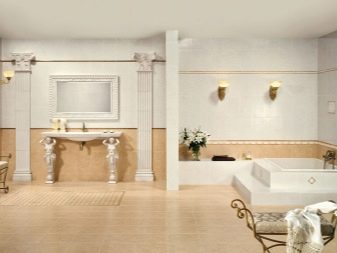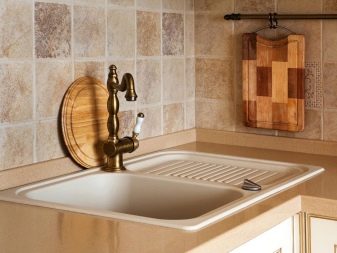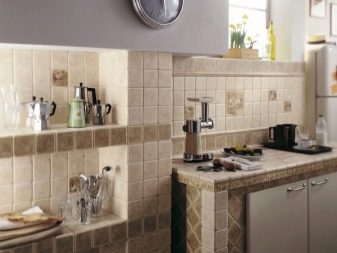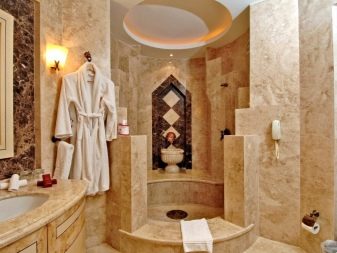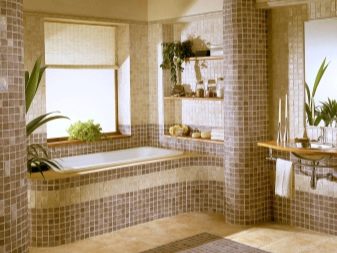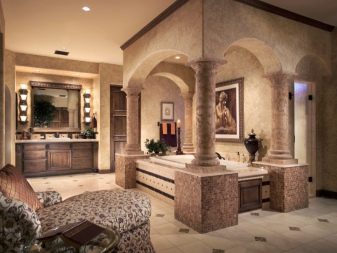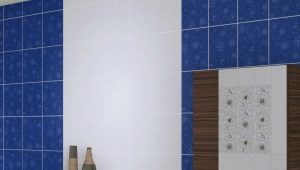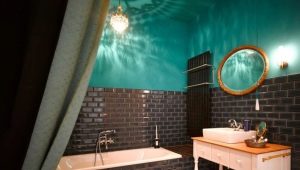Travertine tiles: features and applications
Travertine is an ancient noble stone that was used in the construction of the Roman Colosseum and the Kazan Cathedral in St. Petersburg. Strong and durable stone with unique properties and rich colors, is used to this day as a finishing material in the interiors. However, solid stone is not always necessary, in this regard, manufacturers make collections of tiles, created from natural travertine.
Travertine mining
The most extensive deposits of stone are in Germany (Stuttgart), Italy (Tivoli) and Turkey, in an area with geothermal sources of Pamukkale, which is a miracle of nature. Travertine is mined in mountainous areas, where there are reservoirs and volcanic activity. It occurs as a result of a chemical reaction between carbon dioxide in thermal waters and limestone.A hard slab of travertine is formed in still water, and a soft rock is formed in waterfalls and streams.
Geologists believe travertine is an intermediate form between marble and limestone.
Tile features
The tile is made from natural stone by crushing, pressing, grinding and cutting on modern equipment. Obtained in the production process voids are filled with mastic. Plastic stone is easy to process.
The advantages of travertine tile are that its surface has properties that cause pleasant sensations when used: a soft and slightly oily surface retains heat, which makes natural travertine a means of creating comfort.
Travertine is one of the most popular finishing materials for spa areas in Turkish hotels.
In Turkey, there is one of the sources of travertine - Pamukkale; therefore, historically, travertine is the most suitable material for Turkish steam rooms, where there is high humidity and a constant flow of water.
The reasons for choosing a stone for hammams are not accidental:
- The porosity that allows the tile to absorb water provides no slip.The stone can absorb water, and then it evaporates from it, and this does not destroy it from the inside.
- The material is thermally conductive, so it is pleasant to lie on it, while it does not overheat.
Color solutions
The color palette of travertine tile is determined by its natural color when mining. The stone is not subjected to staining during processing. Total 700 shades of travertine are known.therefore it is impossible to list everything.
The color of natural stone is characterized by irregularities and natural patterns. Raw stone with a soft and porous structure has a large number of veins and color stains.
Spectrum of the most popular shades:
- beige;
- brown;
- yellow;
- Gray;
- red;
- white;
- multicolored;
- pink.
Manufacturers
A real idea of the color characteristics of travertine can be obtained by evaluating the collections of manufacturers. The tile is usually presented in small sizes (squares from 10 to 30 cm wide), although the sizes are different and can be made to order, the tile thickness is 11-17 mm.
Antica-stone
Manufacturer from Turkey, offering a choice of tiles, sizes 300x300 and 300x600 in matte and polished version, with filled pores and pronounced porosity.
The collections are presented in the following colors:
- light beige (classic);
- noce (coffee and brown);
- silver (silver gray);
- gold (yellow);
- rose (pink).
All samples look very natural due to the presence of scenic stains, veins and veins of natural origin. Tile collection Provence is a harmonious combination of 4 shades (yellow, pink, brown and beige). Untreated multi-colored tile in several shades is a color interior solution for a Provence-style bathroom.
Palatin
The manufacturer sells Italian and Turkish travertine in rich colors in sizes 10x10 cm and 20x20 cm:
- yellow;
- classic beige;
- pink.
In the collections of the supplier there are unique noble samples with unique natural patterns.
Newlita
In the supplier's catalog there is a stone from different countries. Prices for Italian stone are significantly higher than for Russian, Kyrgyz and Armenian. This is due to the delicate and original colors of Italian designs: gray-beige and brown.
Turkish stone is presented in smoky-beige tones. But Armenian travertine is very beautiful and is presented in a rich red-orange gamut. Russian samples that can be purchased at affordable prices have a light beige tint.
Kyrgyz Travertine
The manufacturer offers three options for coloring porous polished tiles made of natural stone. The colors in the beige scale do not look very rich, but their advantage is the low price.
Polished tile sold in sizes:
- 300x300 cm;
- 300x400 cm;
- 300x500 cm;
- 300x600 cm;
- under the order.
Stone4home
The manufacturer creates small square tiles of 10x10 and 20x20 cm with drawings, tiles, gzhel and various ornaments.
Natural and imitated tile
The tile with imitation of travertine, is created by imposing a digital pattern on the ceramic tile. Today it is a fashionable version of the colors in the collections of many large manufacturers. As a result, you can get the visual effect of natural stone on a ceramic surface.
The material will differ in that ceramics do not absorb water, are more slippery and cold, have less softness, but the material is stronger. In terms of price, Kyrgyz travertine may be cheaper than varieties of some ceramic tiles, but Turkish and Italian materials surpass tiles at a price of 1.5-2 times.
Average prices for 1 square. natural travertine meter:
- 1450 r. - Kyrgyz;
- 2200 r.- Armenian;
- 2900 r. - Turkish;
- 6000 p. - Italian.
If the finishing area is small, then the purchase of natural travertine coating will be a bit more profitable, but if we are talking about large scales, and the physical qualities of the stone are not as important as its design, then ceramic tiles with colors for travertine will be more profitable.
Collections called travertino are found in the manufacturers' catalogs of italon, lasselsberger group at prices ranging from 800 to 2500 rubles. for the quarter. meter. Manufacturer Vitra offers travertine analogue in soft beige tones. The color range of artificial travertine is beige, and the patterns on the tile completely copy the texture of natural stone.
If you choose a wall tile from a ceramic collection and decorate the floor tile from travertine, then this will make the repair cheaper and be happy to exploit the natural properties of natural stone.
An overview of the Travertino tile collection is available in the next video.
Style decisions
The style features of the material are related to the geography of its mining and the cultural traditions of the countries. Travertine is a finishing material for bathrooms in antique style. Provence style is also combined with travertine, because the Italian city of Tivoli is one of the major mining sites, which historically determines the interior decoration of houses.
Turkish design in the decoration of bathrooms is largely determined by the use of this stone; in Morocco, this material is also being mined, which has been used to create Moroccan baths since ancient times.
Antique style
For a bath in an antique style, you can use a stone of light beige tones, various combinations of tile sizes will be appropriate, for example, a tile of small pieces, which is interspersed with a border or mosaic. In the antique style appropriate floor panels, moldings and even moldings and decorative columns.
Provence
The main feature of Provence style is its Mediterranean spirit, which can be created by choosing simple-looking and cozy tiles. The Provencal style is characterized by untreated tiles with a matte surface, square pieces of small format create a cosiness, it is permissible to alternate monochromatic pieces of tiles with tiles.
Colors for Provence style - faint beige, pale yellow, light brown.
Turkish
Turkish style allows the introduction of the most natural stone in a rich color range. And the more picturesque the tile, the better.
Characteristic features of the Turkish-style bathroom:
- The tiles of one shade are finished with walls and floor.
- The ceiling lighting and dim, built-in, in the bathrooms in the Turkish style lighting should be a little dim.
- The combination of mosaics, geometric patterns, designs and borders.
Moroccan
The design in the style of Morocco is characterized by the use of mosaic, for example, it can be a mosaic collection with golden glitter from ceramic tiles, which can be combined with almond-colored travertine.
For the floor can be selected tiles with an intense symmetrical pattern.
Reviews
Small business owners point out the virtues of a stone for finishing their own hammams. The stone possesses pleasant natural properties, which cannot be compared with clay and granite chips.
The choice of travertine pleases consumers that the tile is thick and durable in contrast to tile, does not require special care and has many colors.
